Heads Up: When you purchase through links on our site, we may earn an affiliate commission at no cost to you.
Are you struggling to make your real estate website stand out? A well-designed landing page is crucial for attracting your target audience and effectively conveying your brand. This post will cover creative real estate website design ideas that can strengthen your brand identity, key features that can enhance user experience, and how to leverage SEO to support your marketing strategy. By addressing these areas, you’ll learn how to create an engaging web page that draws in leads and fosters trust and connection with potential clients.
Key Takeaways
- Strong branding enhances your real estate website’s effectiveness and client recognition.
- Consistent design elements build trust and credibility with potential clients.
- Engaging user interface features encourages exploration and increases lead conversions.
- Implementing modern technology like AI and AR enhances user experience and brand differentiation.
- Regular content updates position you as a knowledgeable authority in the real estate market.
Understanding the Importance of Branding in Real Estate Website Design
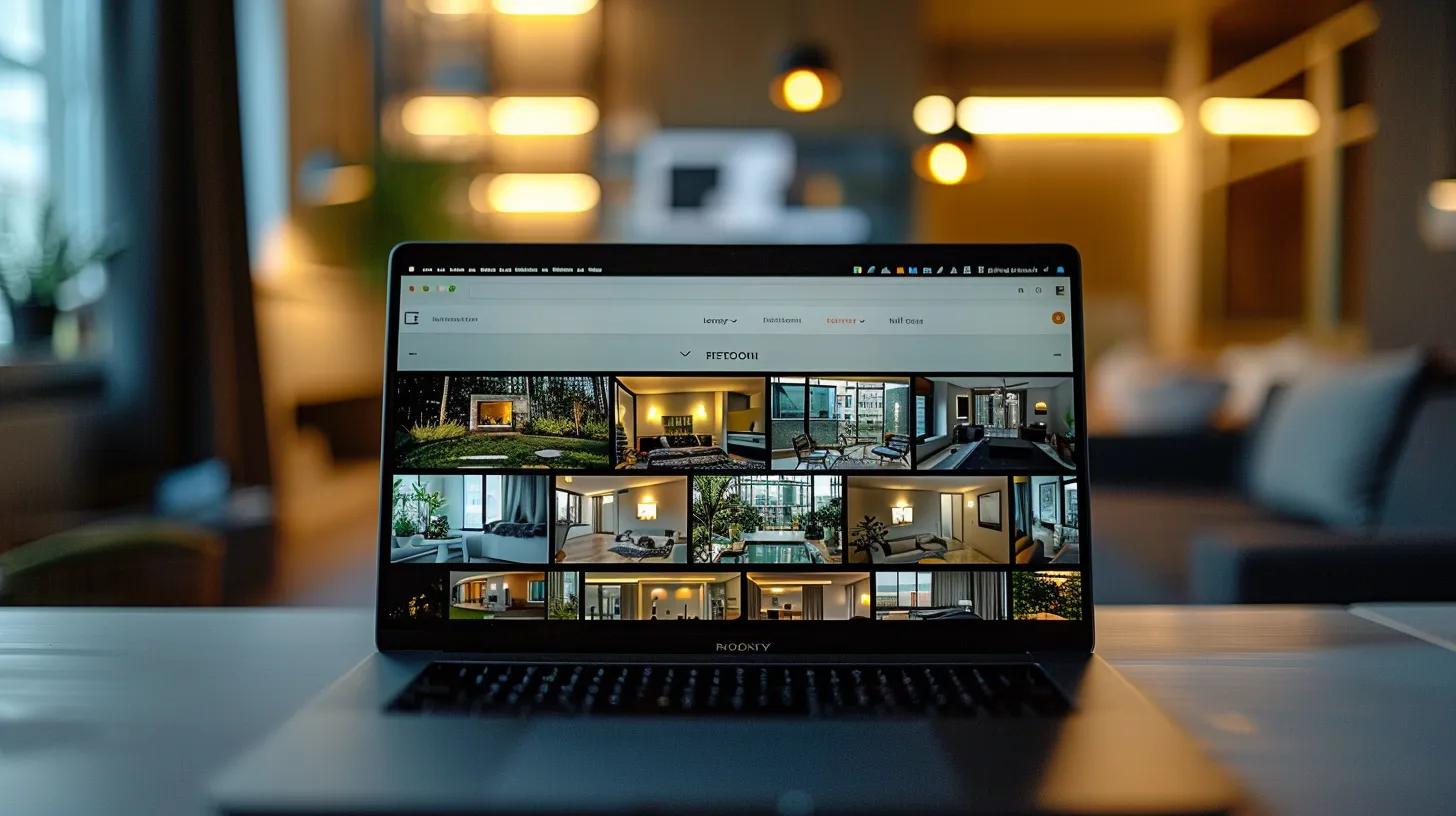
Branding is crucial in real estate website design, as it helps establish your identity as an estate agent. A strong brand ensures your property offerings stand out in a crowded market, making it easier for customers to recognize and remember your services.
Your domain name is the foundation of your online brand, influencing customer perception. A memorable and relevant domain name reinforces trust and credibility, making potential clients more likely to engage with your user interface and explore the properties you offer.
An effective user interface enhances the user experience, drawing customers into your site. When designed with branding elements, it guides users smoothly through property searches, ultimately encouraging them to become leads and clients.
Creative Real Estate Website Design Ideas That Strengthen Your Brand
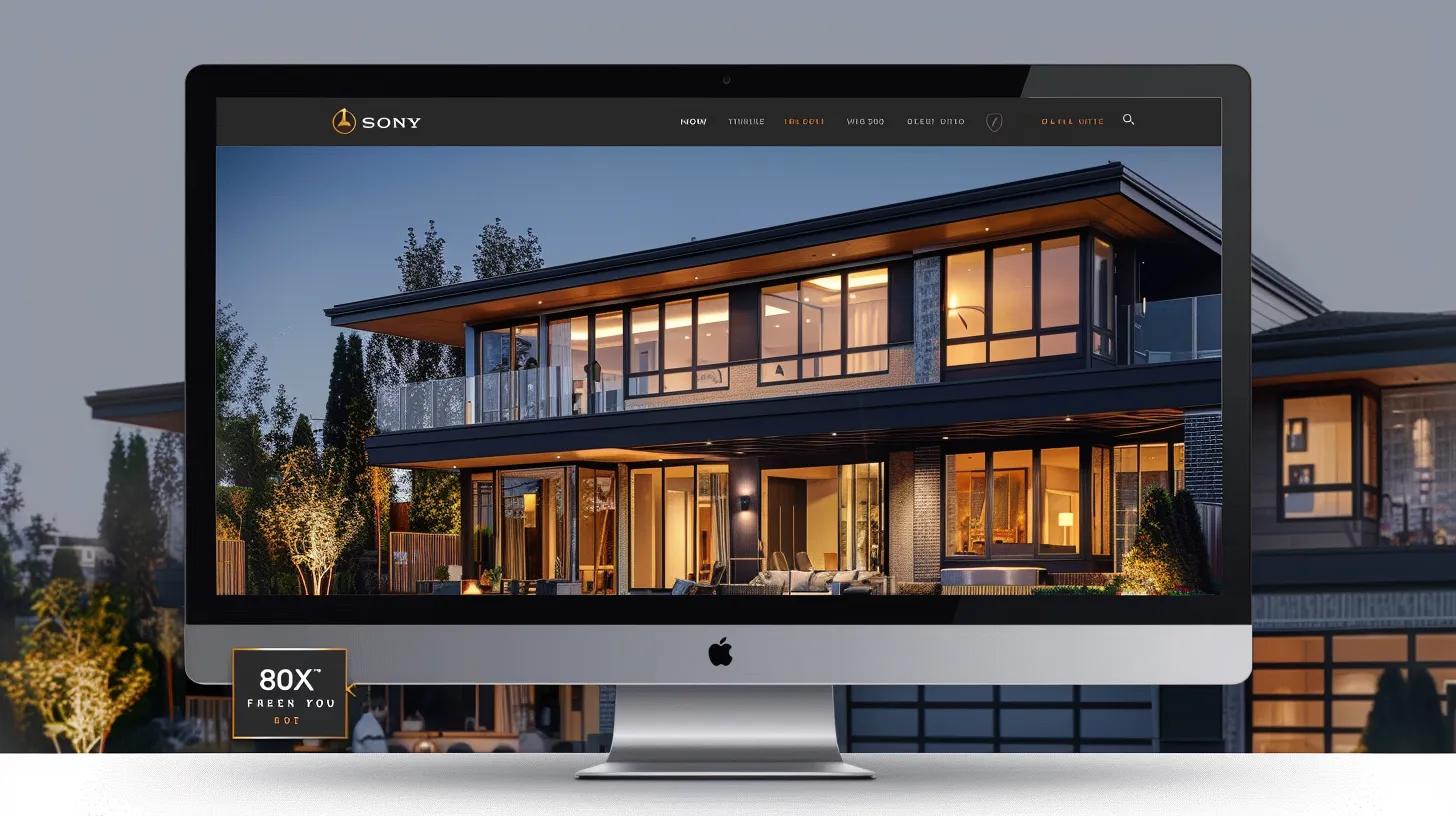
Integrating unique color schemes can enhance your brand identity, making it more memorable to potential clients. Custom typography strengthens brand recognition while engaging user interface elements to improve user experience, encouraging visitors to explore your offerings. Optimizing mobile design ensures brand consistency across devices, and incorporating strategic images and video content effectively tells your brand story, boosting credibility and attracting real estate leads.
Integrate Unique Color Schemes to Reflect Your Brand Identity
Integrating unique color schemes into your real estate website design not only enhances your brand identity but also improves user experienceabove the fold. Selecting colors that resonate with your target audience can evoke emotions, helping potential clients connect with your listings faster. For instance, calming blues can instill trust, while vibrant greens may convey growth and freshness, both essential for establishing credibility and fostering engagement.
Accessibility is key when implementing color schemes, as ensuring that your typography contrasts well with the background colors can significantly impact readability and user interaction. Thoughtfully chosen palettes combined with effective search engine optimization practices can increase your website’s visibility. As you design your site, consider how color choices reflect your brand‘s personality, making it memorable, relatable, and ultimately more appealing to real estate leads.
Use Custom Typography for Enhanced Brand Recognition
Custom typography is a powerful tool that can significantly boost brand recognition, especially in the competitive real estate market. Choosing fonts that align with your brand identity creates a cohesive look throughout your site, enhancing user experience and making navigation smoother for potential clients. For instance, a modern serif font might suggest professionalism for a commercial propertybroker, while a clean sans-serif font can convey a contemporary feel, appealing to younger audiences.
Consider how your chosen typography interacts with other design elements when utilizing a website builder. Consistent font sizes and styles across headings, body text, and call-to-action buttons contribute to a polished and professional appearance. This approach fosters brand recognition and guides visitors through the site seamlessly, increasing the likelihood of converting them into leads. Prioritize readability and balance style and functionality to create an inviting environment for your audience.
Implement Engaging User Interface Elements for Improved Experience
Incorporating engaging user interface elements into your web design as a real estate agent is essential for enhancing user experience and strengthening your brand. Simple yet effective design features, like intuitive navigation, high-quality images, and interactive property maps, attract potential clients and keep them interested in your offerings. When your website is easy to navigate, visitors are more likely to explore your listings and engage with your services, ultimately increasing your chances of converting them into leads.
Additionally, consider using dynamic elements like interactive search filters and chatbots to assist users in finding their ideal properties. These features foster a personalized experience and showcase your commitment to customer engagement. Creating a user-friendly environment reinforces your brand‘s reliability and professionalism, setting you apart in the competitive real estate market and attracting more potential clients to your services.
Optimize Mobile Design for Brand Consistency Across Devices
Optimizing mobile design is essential for maintaining brand consistency across various devices. As more users engage with real estate websites on smartphones and tablets, ensuring that your site adapts seamlessly to these platforms enhances their browsing experience. Focus on responsive design principles, ensuring images, text, and navigation elements scale appropriately, allowing users to easily access property listings regardless of their device.
Furthermore, prioritize mobile-specific features that reflect your brand‘s identity while improving usability. For instance, consider implementing larger call-to-action buttons, simplified navigation menus, and touch-friendly elements that enhance user experience. By creating a cohesive brand presence across all devices, you not only improve accessibility but also leave a lasting impression on potential clients looking for real estate services:
| Mobile Design Features | Benefits |
|---|---|
| Responsive Design | Ensures a smooth experience on any device |
| Larger Call-to-Action Buttons | Increases engagement and conversion rates |
| Simplified Navigation Menus | Makes finding properties easier for users |
| Touch-Friendly Design Elements | Enhances usability and encourages exploration |
Incorporate Strategic Images and Video Content to Tell Your Brand Story
Incorporating strategic images and video content into your real estate website is essential for conveying your brand story effectively. High-quality images capture the unique features of your properties and drive interest among potential clients. Videos can offer virtual tours, showcasing the lifestyle and atmosphere of each listing, which helps establish an emotional connection with viewers and encourages them to learn more about your services.
To maximize the impact of your visual content, consider using images that align with your brand‘s identity. For instance, if you aim to attract a luxury clientele, utilize sleek, polished photography and professionally produced videos highlighting sophisticated details. Organizing your gallery with an intuitive layout can enhance user experience, allowing prospective clients to view available listings with ease:
| Content Type | Purpose |
|---|---|
| High-Quality Images | Showcase unique property features |
| Virtual Tours | Create emotional connections |
| Brand-Aligned Visuals | Attract targeted clientele |
| Intuitive Gallery Layout | Enhance user experience |
- Instant feedback
- Valuable insights
- Actionable tips
Features to Make Your Real Estate Website Stand Out
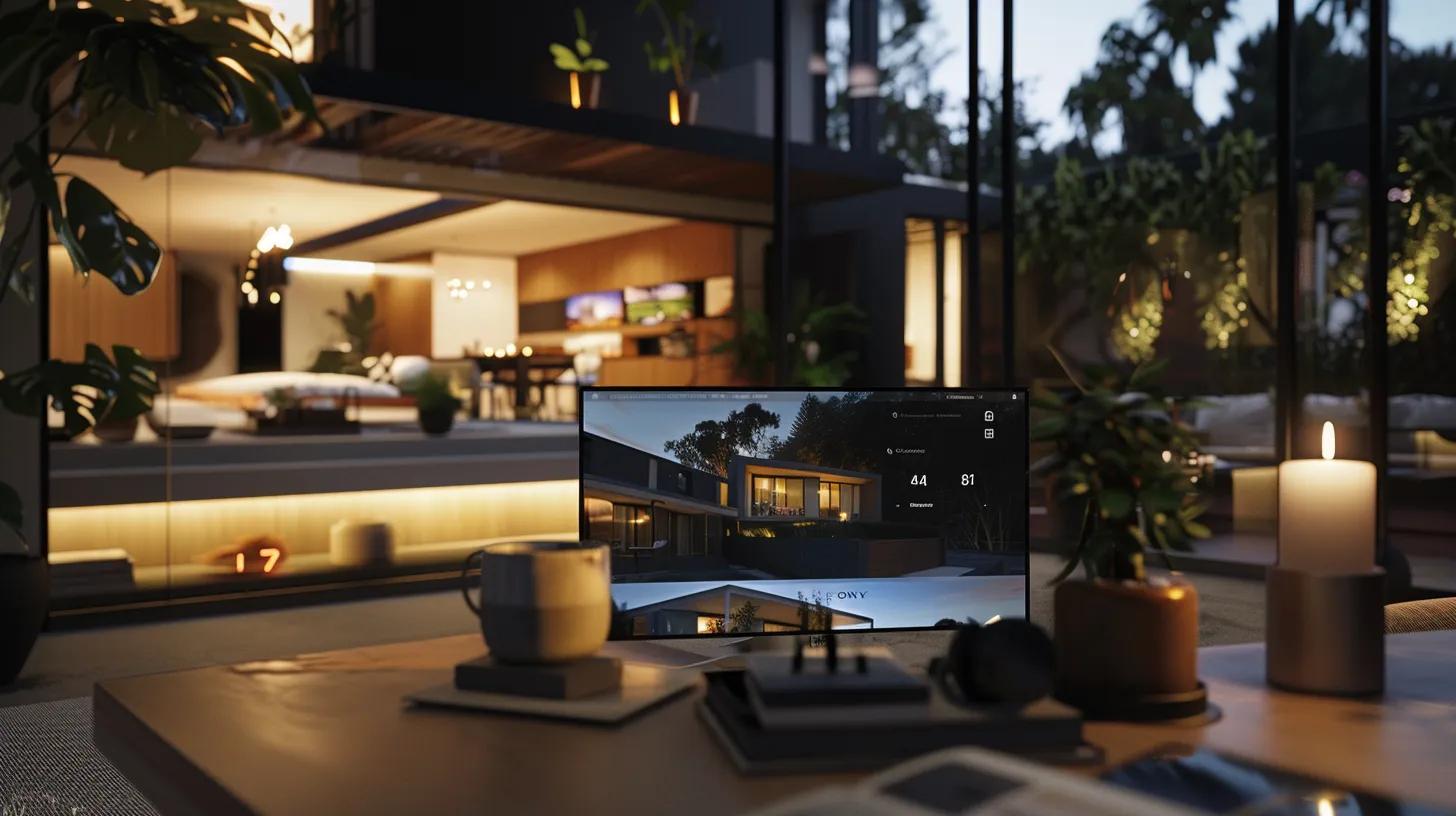
To create a standout real estate website, implement unique features that enhance branding and user experience. Showcasing interactive property listings invites exploration, while virtual tours elevate user engagement. Compelling call-to-action buttons aligned with your brand strengthen conversions. Offering valuable resources establishes your authority, and integrating live chat fosters personalized interaction, making your brand more relatable to potential clients.
Showcase Unique Property Listings With Interactive Elements
Showcasing unique property listings with interactive elements enhances user engagement and strengthens your brand image. Incorporating features like virtual tours and 360-degree views allows potential clients to explore properties dynamically. This tactile experience can help prospects visualize themselves in the space, leading to increased interest and conversion rates.
Additionally, integrating interactive floor plans enables visitors to better understand a property‘s layout and identify features that matter most to them. These advancements provide valuable information and enhance your brand’s credibility by showing that you utilize modern technology to support your clients. Consider the table below for practical ideas on showcasing property listings effectively:
| Interactive Element | Benefits |
|---|---|
| Virtual Tours | Enhance property visualization and attract serious buyers |
| 360-Degree Views | Allow immersive exploration of properties |
| Interactive Floor Plans | Help clients understand layouts and identify preferred features |
| Live Chat Integration | Provide immediate assistance to potential leads |
Employ Virtual Tours to Enhance User Engagement
Employing virtual tours on your real estate website can significantly boost user engagement and provide a remarkable experience for potential clients. Visitors can envision themselves in the space as they navigate through properties in a 360-degree format, leading to a deeper emotional connection with the listings. This immersive experience keeps users on your site longer and encourages them to return, ultimately converting interest into inquiries.
Furthermore, virtual tours can set you apart from competitors by showcasing your commitment to modern technology and enhancing your brand‘s credibility. Integrating this innovative feature facilitates informed decision-making for buyers and renters, addressing their needs for detailed property insights. As a result, you increase your chances of transforming leads into loyal clients who value your comprehensive approach to real estate service.
Create Compelling Call-to-Action Buttons That Align With Your Brand
To create compelling call-to-action buttons that align with your brand, focus on clarity and design. Ensure that the buttons are visually distinct from other elements on your site, using colors that reflect your brand identity. For example, if your brand emphasizes trust and professionalism, opting for a deep blue button with clear text can encourage users to take the next step in their property search.
In addition to design, the wording of your call-to-action buttons plays a vital role in conversion rates. Use action-oriented phrases that resonate with your audience’s needs, such as “Schedule a Tour” or “Get Your Free Property Report.” These direct prompts guide potential clients through their journey, enhancing their engagement with your website and increasing the likelihood of conversion:
- Make buttons visually distinct with brand colors.
- Use clear, action-oriented language.
- Encourage user engagement and exploration.
Offer Valuable Resources and Content to Position Your Brand as an Authority
To position your brand as an authority in the real estate industry, offering valuable resources and content on your website is essential. Create informative guides, market analyses, and tips for buyers and sellers that address common questions and concerns. By providing this content, you establish yourself as a knowledgeable resource, attracting potential leads seeking guidance as they navigate the real estate market.
Your website can benefit significantly from engaging blog posts, video tutorials, and downloadable checklists that simplify complex processes for your audience. By consistently sharing useful information through your platform, you enhance user experience and build trust and credibility with your visitors. This strategy fosters long-term client relationships, ultimately driving more inquiries and conversions for your real estate services.
Integrate Live Chat for Personalized User Interaction
Integrating live chat into your real estate website design enhances personalized user interaction, allowing you to connect with potential clients in real time. This feature addresses immediate questions and concerns, creating a more engaging experience that reflects your brand’s commitment to customer service. You demonstrate professionalism and foster trust by providing instant assistance, which is crucial in converting visitors into leads.
Live chat improves user satisfaction and provides valuable insights into client preferences and behaviors. You can analyze chat transcripts to identify common inquiries, allowing you to tailor your content and services accordingly. Implementing this feature positions your brand as accessible and responsive, ultimately making your real estate offerings more appealing to prospective buyers and sellers:
- Enhances personalized user interaction.
- Addresses immediate client questions.
- Demonstrates professionalism and fosters trust.
- Provides insights into client preferences.
- Positions your brand as accessible and responsive.
Leveraging SEO for Real Estate Website Branding

Identifying target keywords that align with your brand vision is essential for optimizing your real estate website. You’ll want to fine-tune on-page elements to enhance discoverability, build backlinks that bolster your brand‘s credibility, and utilize local SEO techniques to connect with your community. Fostering social proof through online ratings and reviews can significantly enhance your reputation. Each of these strategies will support your brand and attract more potential clients.
Identify Target Keywords That Align With Your Brand Vision
To effectively align your real estate website with your brand vision, identify keywords that resonate with your target audience. Think about the specific services you offer, such as “luxury homes in [Your City]” or “first-time homebuyer tips.” Using tools like Google Keyword Planner can help you find phrases with high search volume that potential clients are using. This enhances your website’s visibility and positions you as an authority in the niche you aim to dominate.
Once you have identified relevant keywords, incorporate them naturally into your website’s content, including headings, property descriptions, and blog posts. For example, if your brand emphasizes eco-friendly homes, create content around terms like “sustainable real estate” or “green property listings.” This strategy ensures your message aligns with your brand identity while appealing to the right audience, ultimately driving more qualified traffic to your site and increasing your chances of converting visitors into leads.
Optimize on-Page Elements for Discoverability
Optimizing on-page elements is vital for enhancing discoverability on your real estate website. Begin by ensuring your title tags, meta descriptions, and header tags are aligned with your target keywords. For instance, if you specialize in “affordable condos in [Your City]”, include this phrase in your page title and description to attract relevant traffic from search engines, ultimately leading to more qualified leads.
Also, don’t overlook the importance of image optimization. Use descriptive alt text for your property images that reflect your brand identity and include relevant keywords. This not only improves accessibility for visually impaired users but also boosts your site’s SEO performance, making it easier for potential clients to find your listings. Implementing these on-page strategies effectively increases your visibility, driving more engagement and conversions as you grow your brand:
| On-Page Element | Action Steps |
|---|---|
| Title Tags | Include target keywords related to your services. |
| Meta Descriptions | Craft engaging summaries that feature key phrases. |
| Header Tags | Organize content using H1, H2 tags with keywords. |
| Image Alt Text | Use descriptive text with keywords for every image. |
Build Backlinks That Enhance Your Brand’s Credibility
Building quality backlinks is vital for enhancing your brand’s credibility in the real estate market. When reputable websites link back to your site, search engines signal that your content is valuable and trustworthy. Reach out to local news outlets, industry blogs, and real estate directories to foster these connections. By securing backlinks from high-authority sources, youboost your site’s SEO performance and establish your firm as a reliable player in the competitive real estate landscape.
To further enhance your branding, consider participating in niche-related forums or guest blogging on established real estate websites. Share your expertise on topics relevant to potential clients, and include links to your site. This increases your visibility and positions you as an authority, attracting more qualified leads. By actively working on your backlink strategy, you create a more robust online presence that reflects your professional identity as a trusted real estate agent:
| Backlink Strategy | Benefit |
|---|---|
| Local News Outlets | Establishes credibility within the community |
| Industry Blogs | Increases visibility and authority in the real estate niche |
| Real Estate Directories | Enhances search engine ranking and directs traffic |
| Guest Blogging | Positions you as an expert and attracts potential clients |
Utilize Local SEO Techniques to Connect With Your Community
Utilizing local SEO techniques is essential for real estate professionals looking to establish a strong presence in their community. By incorporating location-based keywords into your website content, such as your city or neighborhood names, you enhance your search visibility for potential clients actively seeking real estate services in those areas. This focused approach attracts qualified leads and reinforces your brand as a trusted local expert.
Engaging with community-specific events and local directories further strengthens your online credibility. By joining community forums, sponsoring local events, or promoting neighborhood features on your blog, you create valuable connections that resonate with your target audience. This strategy positions you as more relatable and results in higher engagement, increasing the chances of converting visitors into loyal clients who recognize your brand as their go-to real estate resource.
Foster Social Proof Through Online Ratings and Reviews
Fostering social proof through online ratings and reviews is essential for enhancing your real estate branding. When potential clients see positive feedback from satisfied customers, it builds trust and credibility, making them more likely to engage with your services. Promising testimonials on your website can effectively showcase your successes and reinforce your brand‘s reliability, setting you apart from competitors.
Encouraging clients to leave reviews after successful transactions can significantly boost your online presence. Whether positive or negative, responding to these reviews demonstrates your commitment to customer satisfaction and creates a more engaging user experience. By actively managing your online reputation, you enhance your branding efforts and attract more leads seeking trustworthy real estate services.
Building Trust Through Transparency in Design
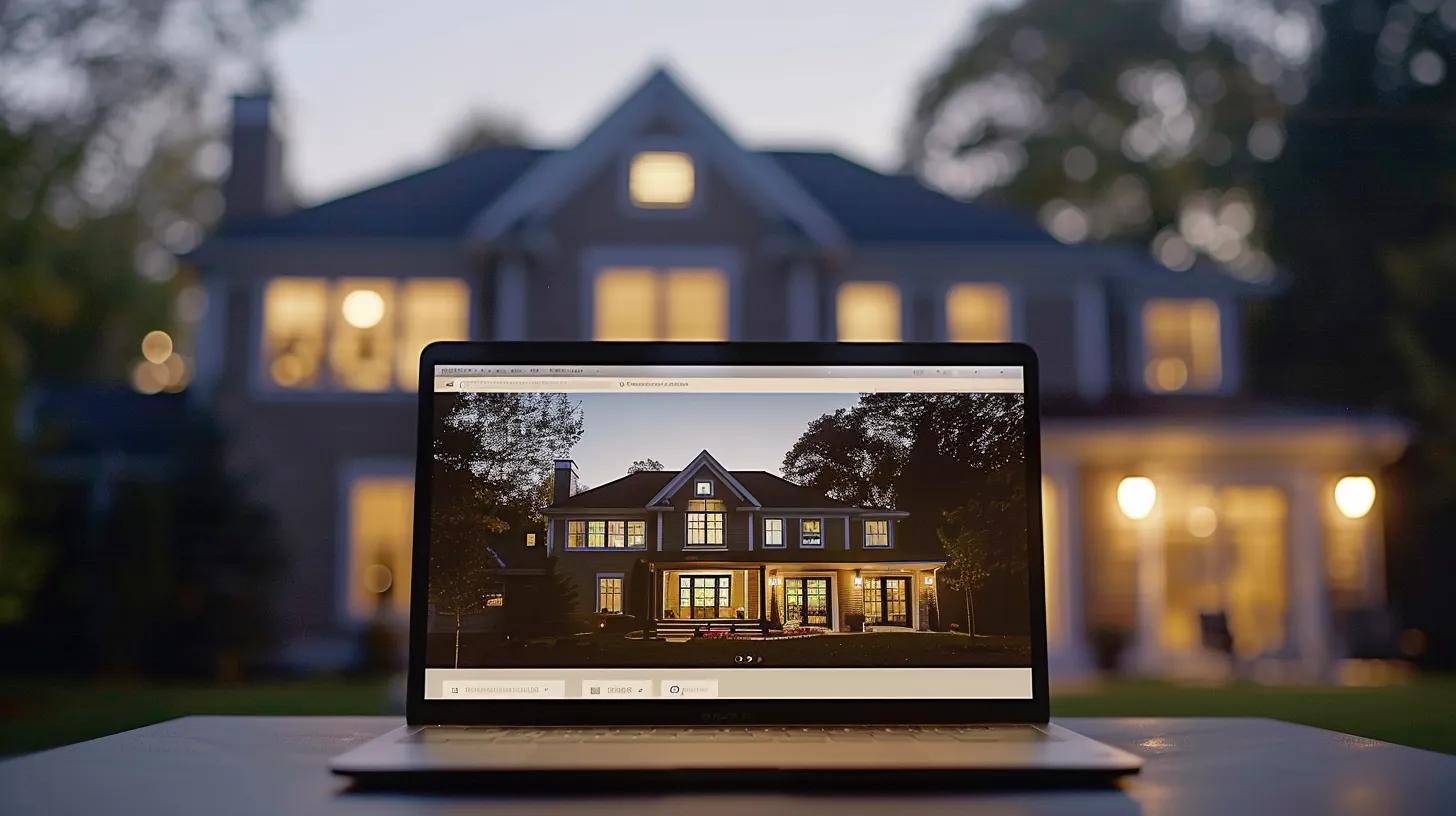
Building trust through transparency in design is essential for your real estate website’s effectiveness. Feature clear contact information for better accessibility and incorporate client testimonials to showcase success stories. Offer transparency in your business practices through disclosure policies, use professional photography to convey authenticity, and highlight certifications and memberships to enhance credibility. These strategies not only foster trust but also improve your online presence.
Feature Clear Contact Information for Better Accessibility
Featuring clear contact information on your real estate website is essential for building trust and ensuring better accessibility for potential clients. Prominently displaying phone numbers, email addresses, and contact forms encourages users to reach out with inquiries, fostering a sense of reliability. Clients often seek immediate assistance when navigating property options, and having this information readily available makes it easier for them to connect with you.
Consider placing your contact details in visible locations, such as the header or footer of your website, to enhance visibility. This approach streamlines communication and reflects your commitment to transparency and customer service. By making it simple for users to get in touch, you create a welcoming atmosphere that sets the stage for successful interactions and strengthens your brand‘s credibility in the competitive real estate market.
Incorporate Client Testimonials to Showcase Success Stories
Incorporating client testimonials on your real estate website is a powerful way to build trust and showcase your success stories. When potential clients see positive feedback from satisfied customers, it reinforces your credibility in the market and assures them of your expertise. Make sure to feature testimonials prominently on your site, perhaps on the homepage or a dedicated page, as this strategic placement increases visibility and opportunity for engagement.
To maximize the impact of testimonials, consider including specific details such as client names, locations, and the types of properties involved. This personalizes the testimonials and makes them more relatable to visitors who may share similar needs or situations. By showcasing these success stories effectively, you create an inviting environment that encourages potential clients to trust your services and reach out for assistance:
- Feature testimonials on your homepage for immediate visibility.
- Include client names and locations to enhance relatability.
- Showcase diverse property types to attract a broader audience.
- Update testimonials regularly to reflect recent successes.
Offer Transparency in Business Practices Through Disclosure Policies
Offering transparency in your business practices through clear disclosure policies significantly enhances trust with your potential clients. By outlining essential information, such as fees, commissions, and terms of service, you create an environment of honesty that reassures visitors. This approach aligns with their desire for openness and positions your real estate brand as reliable and trustworthy in a competitive market.
Incorporating straightforward disclosure policies on your website shows potential clients that you prioritize their understanding and comfort. For instance, providing easy access to information about your process for buying or selling properties can alleviate concerns and guide users in making informed decisions. This transparent communication fosters a positive experience, encouraging leads to engage with your services and ultimately build loyalty to your brand.
Use Professional Photography to Convey Authenticity
Professional photography on your real estate website plays a critical role in conveying authenticity and attracting potential clients. High-quality images not only showcase the unique features of your properties but also reflect your commitment to professionalism in the real estate market. Clients often make decisions based on visuals, so investing in skilled photographers can create an emotional connection that encourages users to explore your listings further.
Incorporating authentic imagery also helps build trust with your audience. When potential clients see clear, well-lit photos that highlight the details and ambiance of a property, they perceive your brand as reliable and credible. Showcasing real images of the spaces you represent fosters transparency and allows clients to envision themselves living or working in those environments, enhancing their overall experience on your site. Consider these steps to use professional photography in your branding strategy effectively:
- Invest in high-quality images that highlight property features.
- Ensure images are well-lit and thoughtfully composed.
- Use authentic visuals that represent the properties accurately.
- Incorporate images across various pages to create a cohesive brand identity.
Highlight Certifications and Memberships to Enhance Credibility
Highlighting certifications and memberships on your real estate website can significantly enhance your credibility. When potential clients see recognized credentials, such as those from the National Association of Realtors or local real estate boards, it reinforces their confidence in your expertise. Displaying these credentials prominently demonstrates your commitment to industry standards and sets you apart as a reliable resource in a competitive market.
Furthermore, aligning your branding with certifications allows you to communicate professionalism to your audience. Consider showcasing these achievements on key pages of your website, such as the homepage or an “About Us” section, where visitors can easily access this information. This transparency fosters trust and reassures clients that they are dealing with a knowledgeable agent dedicated to their needs, ultimately encouraging them to engage with your services.
Future Trends in Real Estate Website Design for Stronger Branding

As you look to strengthen your branding through innovative real estate website design, consider embracing future trends that enhance user experience and attract potential clients. You’ll explore AI and chatbot integration for more interactive communication, augmented reality features for immersive property viewing, and evolving design trends that resonate with modern aesthetics. Additionally, you’ll learn how sustainability in design choices appeals to eco-conscious consumers and how data analytics can refine your brand strategy for better engagement.
Explore AI and Chatbot Integration for Enhanced User Experience
Integrating AI and chatbot technology into your real estate website design can significantly enhance user experience and streamline client interactions. By offering instant responses to common inquiries, you allow potential clients to receive the information they need without delays, keeping them engaged and more likely to explore your property listings. Chatbots can also guide users through the search process, making recommendations based on their preferences, which creates a more personalized experience that aligns with your brand.
Moreover, utilizing AI-driven insights can give you a deeper understanding of client behaviors and preferences, allowing you to tailor your marketing strategies. For instance, by analyzing chat interactions, you can identify frequently asked questions or topics of interest, enabling you to create relevant content that meets the needs of your audience. This proactive approach enhances user satisfaction and establishes your brand as a responsive and knowledgeable resource in the competitive real estate market.
Incorporate Augmented Reality Features for Property Viewing
Incorporating augmented reality (AR) features into your real estate website design can enhance property viewing experiences. You create an immersive environment that uniquely showcases listings by allowing potential clients to walk through properties using their smartphones or tablets virtually. This captivates visitors and helps them visualize their future homes, which is essential for making informed decisions in the competitive real estate market.
As a real estate agent, implementing AR technology can set your brand apart from competitors. You might consider offering 3D visualizations or virtual staging, enabling users to see different layouts or furniture arrangements within a space. This level of engagement fosters a deeper connection with visitors, increasing their likelihood of reaching out for more information or a property tour, ultimately driving conversions and strengthening your branding efforts.
Adapt to Evolving Design Trends for Modern Appeal
To remain competitive in today’s market, embracing evolving design trends is crucial for your real estate website. Modern design reflects user preferences and enhances engagement, making your site more appealing to potential clients. Incorporating minimalistic styles and vibrant color palettes can create a fresh look, drawing visitors in and encouraging them to explore your offerings.
Moreover, integrating features like interactive content and animations can enrich the user experience on your site. These elements capture attention and enhance storytelling around your brand and listings. By adapting to these trends, you can position your real estate business as forward-thinking, effectively resonating with a tech-savvy audience that values innovation:
| Design Trend | Benefit |
|---|---|
| Minimalistic Styles | Creates a clean look that enhances usability. |
| Vibrant Color Palettes | Attracts attention and reflects brand identity. |
| Interactive Content | Increases engagement and keeps visitors on your site longer. |
| Animations | Enhances storytelling and brand connection. |
Embrace Sustainability in Design Choices to Attract Eco-conscious Consumers
Embracing sustainability in your real estate website design is an effective way to attract eco-conscious consumers. By using energy-efficient hosting services and sustainable materials in your branding elements, you enhance your online presence and resonate with buyers and sellers who prioritize environmental responsibility. Consider highlighting green building features or eco-friendly neighborhoods in your property listings, as these aspects directly appeal to this growing market segment.
Implementing sustainable design choices can also involve using natural colors and organic shapes in your visual elements, reflecting a commitment to eco-friendly practices. Furthermore, you might incorporate informative content about sustainability practices in real estate, such as tips for energy-efficient home improvements. By providing actionable insights on your website, you position your brand as a trusted resource and create stronger connections with consumers who value sustainability.
Utilize Data Analytics to Refine Your Brand Strategy
Data analytics allows you to gain crucial insights into your website’s performance and user behavior. You can identify what resonates with your audience by tracking metrics such as page views, conversion rates, and user demographics and tailor your website design accordingly. This informed approach enhances your branding efforts and ensures you’re meeting the needs of potential clients more effectively.
Moreover, data-driven decisions enable you to refine your marketing strategies, ensuring your promotional efforts align with user interests. For instance, by analyzing which property listings attract the most engagement, you can spotlight these features in your design and marketing campaigns. This strategy improves your brand visibility and fosters deeper connections with your audience, ultimately driving more leads and conversions for your real estate business.
Actionable Steps to Revitalize Your Real Estate Website
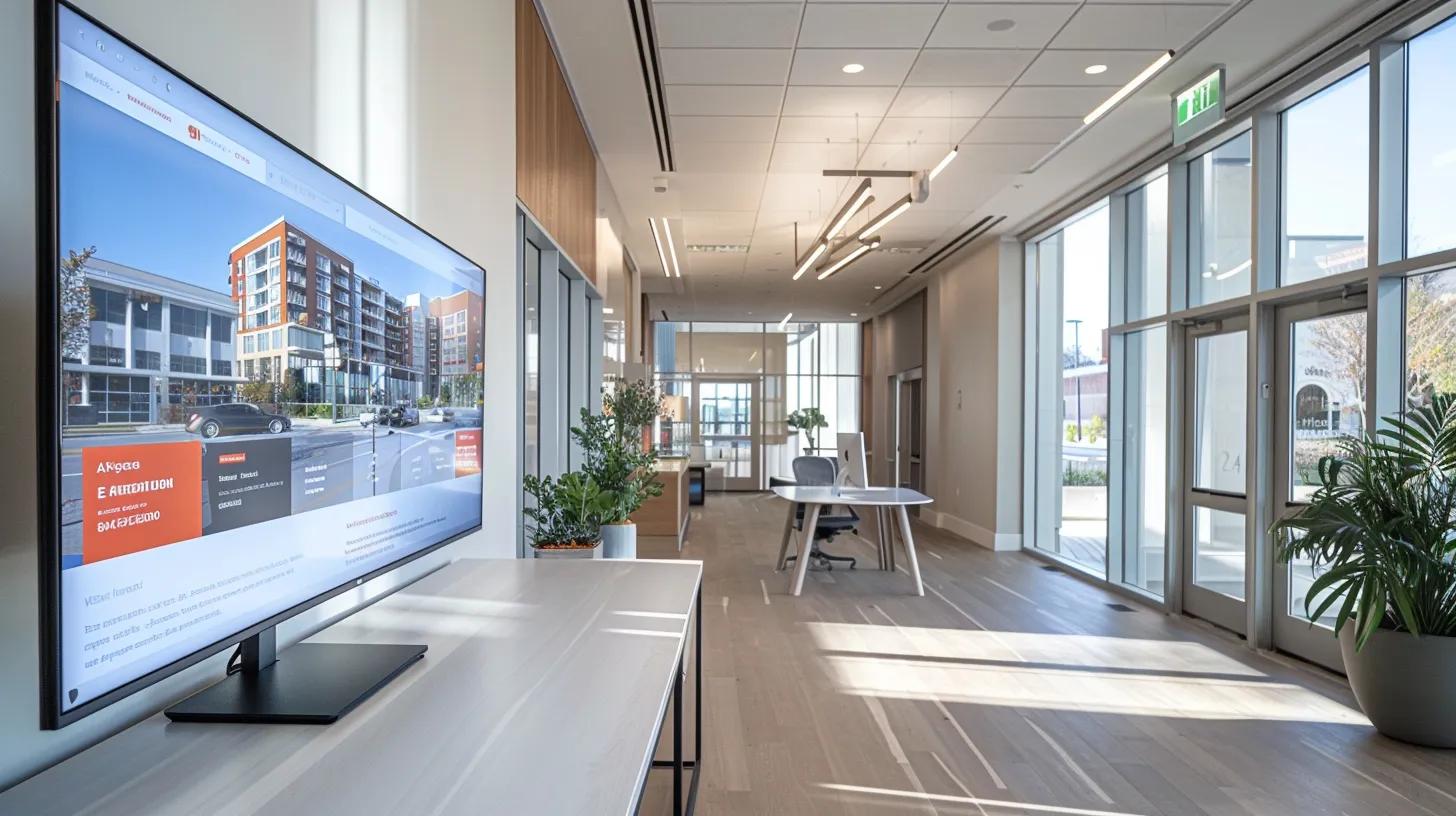
To revitalize your real estate website and strengthen your brand, conduct a website audit to identify areas for improvement. Develop a comprehensive brand style guide to ensure consistency in design and messaging. Regularly update content to reflect market changes, monitor user feedback for ongoing enhancements, and collaborate with design experts to innovate your brand image. These actionable steps will significantly enhance your website’s effectiveness in attracting potential clients.
Conduct a Website Audit to Identify Improvement Areas
Conducting a website audit is essential in revitalizing your real estate website and enhancing your brand’s online presence. You can pinpoint specific areas needing improvement by carefully assessing the functionality, design elements, and overall user experience. For instance, check for slow-loading pages or broken links, as these can deter potential clients and negatively impact search engine rankings.
Evaluate how well your website aligns with current branding initiatives and user expectations. Take note of inconsistencies in color schemes, typography, and messaging that can confuse visitors and dilute your brand identity. A thorough audit will help you create a clear action plan, ensuring that your website effectively communicates your value and engages potential clients seeking real estate services.
Develop a Comprehensive Brand Style Guide for Consistency
Developing a comprehensive brand style guide is essential for maintaining consistency across your real estate website. This guide should outline your color schemes, typography, logo usage, and other visual elements representing your brand identity. Having these guidelines in place ensures that every aspect of your website communicates a cohesive message, making it easier for potential clients to recognize and remember your brand.
In your brand style guide, include a clear definition of your brand voice and messaging, which will help create a unified tone throughout your content. Whether you are crafting property listings or educational resources, consistency in language and style reinforces your professionalism and builds trust with visitors. A well-structured guide is a valuable reference point for all team members, ensuring your brand identity remains strong and recognizable in the competitive real estate market.
Regularly Update Content to Reflect Market Changes
Regularly updating your content ensures that your real estate website stays relevant in a constantly shifting market. By integrating the latest property trends, market analysis, and neighborhood highlights, you engage potential clients and position yourself as a knowledgeable authority in your field. This strategy can build trust and credibility, encouraging visitors to return for updated information, thus increasing the chances of converting them into leads.
Consider implementing a blog or news section on your website where you share insights and tutorials about local real estate dynamics, mortgage updates, or home-buying tips. Regular updates not only attract search engines but also give your audience valuable, actionable information that can enhance their property search experience:
- Integrate the latest property trends and market analysis.
- Build a blog or news section for regular insights.
- Share valuable home-buying tips and mortgage updates.
Monitor User Feedback for Ongoing Improvements
Monitoring user feedback is essential for ongoing improvements to your real estate website. By actively seeking insights from visitors, you can identify areas where your design may fall short or where users encounter challenges. For example, implementing surveys or feedback forms after property inquiries can provide valuable information on how your website meets user needs, allowing you to refine features or enhance navigation accordingly.
Engaging with user feedback improves your website’s functionality and builds a stronger connection with your audience. Addressing feedback and making visible changes based on client suggestions demonstrates your commitment to providing an exceptional user experience. This approach enhances your brand image and increases the likelihood that satisfied visitors will return and recommend your services to others within the competitive real estate market.
Collaborate With Design Experts to Innovate Your Brand Image
Collaborating with design experts can significantly enhance your real estate website’s branding. These professionals bring specific skills that can elevate your site’s visual appeal and functionality, ensuring it resonates well with potential clients. They can offer insights into the latest design trends, user experience principles, and branding strategies that align with your real estate business objectives.
When working with design experts, it’s essential to communicate your vision. Share your branding goals, target audience, and the unique value you offer in the real estate market. This collaboration can lead to innovative design solutions that enhance user engagement and reinforce your brand identity. Explore the following benefits of this partnership:
| Benefit | Description |
|---|---|
| Expert Insights | Access to the latest trends and user experience best practices. |
| Tailored Solutions | Custom designs that align with your branding and business goals. |
| Enhanced Functionality | Improved navigation and features that boost user engagement. |
| Consistent Branding | Establish a cohesive look and feel across all digital platforms. |
Conclusion
Innovative real estate website design ideas are pivotal in building a strong brand identity that resonates with potential clients. By integrating unique color schemes, custom typography, and engaging user interface elements, you enhance user experience and foster deeper connections with visitors. Employing features like virtual tours and live chat significantly boosts engagement and positions your brand as a modern, trustworthy resource. Prioritizing these design strategies attracts more leads and solidifies your reputation as a leading expert in the competitive real estate market.











